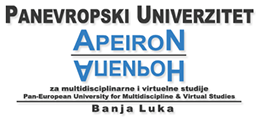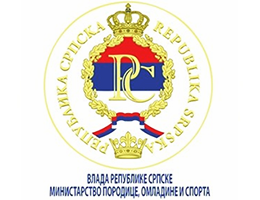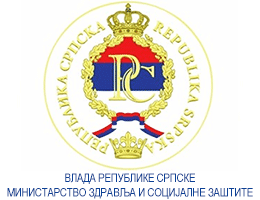Prevalence of Obesity in Younger School-Age Students
Volume 15, Issue 1 (2025)
Volume 15, Issue 1 (2025)
Prevalence of Obesity in Younger School-Age Students
Abstract:
The primary goal of this research is to objectively
determine the actual state of nutrition in younger
school-aged students, of both sexes, from four primary
schools in the Odžaci municipality of the Republic of
Serbia. The sample of respondents consisted of younger
school age students from four primary schools from the
area of the Odžaci municipality (R. Serbia). The total sample
of respondents consisted of 93 students of both sexes,
of which 42 were boys and 51 were girls. For research
needs, basic anthropometric measurements, body height
and body weight were applied, and the body mass index
(BMI) was calculated based on the aforementioned. The
BMI was used for the purpose of assessing the nutrition of
respondents - students in individual groups.
All collected data was processed using descriptive and
comparative statistics. The arithmetic mean, standard deviation,
maximum and minimum measurement values were
calculated from the descriptive statistics area, while the t
test of independent samples was used from the comparative
statistics area.
The research results show that the prevalence of obesity
among younger school age students is 19.4%, while another
16.1% of students are at risk of obesity. Boys and
girls did not differ significantly in BMI. Respondents -
older students on average have higher BMI values than
younger students, but obesity was not found to be more
prevalent in any of the examined age groups.
The obtained results enable the design of strategies for
further research on younger school age children, for the
purpose of monitoring growth and development, as well as
the possibility of determining certain standards of psychophysical
preparedness of children for going to school, successful
school attendance and inclusion in various physical
activity programs.
Keywords:
antopometric measurements, obesity, younger school age, gender, age.
Full Text:
References:
Abazović, E., Hasanbegović, S., Kovačević, E., Okanović, I., Kazazović, E., Ademaj, Z., Lakotra, R. & Mekić, A. (2016). Pretilost djece osnovnih
škola Kantona Sarajevo. „Štamparija Fojnica“ d.d. Fojnica. [in Serbian]
Antonić Degač, K., Kaić Rak, A., Mesaroš-Kanjski E., Petrović, Z. & Capak, K. (2004). Stanje uhranjenosti i prehrambene navike školske
djece u Hrvatskoj. Pae diatr Croatia ;48:9-15. [in Croatian]
Bajrić, O., Srdić, V., Bajrić, S., Vukajlović, V. (2021). Monitoring fizičkog i motoričkog razvoja djece predškolskog i mlađeg školskog uzrasta
u gradu banja luka. Banja luka: Panevropski Univerzitet Apeiron. [in Serbian]
Basaldua, N. & Chiquete, E. (2008). Common predictors of excessive adiposity in children from a region with high prevelance of overweight.
Annals of Nutrition & Metabolism. 52(3); 227-32.
Božić - Krstić, V., Pavlica, T., & Rakić, R. (2005). Neke antropološke karakteristike djece u tri osnovne škole u Novom Sadu. Glasnik
Antropološkog društva Jugoslavije, 40, 95-103. [in Serbian]
Blair, S.N. & Brodney, S. (1999). Effects of physical inactivity and obesity on morbidity and mortality: current evidence and research issues.
Medicine and Science Sport Exercise, 31; 646-662.
Centers for Disease Control and prevention USA, (2000).
Delaš, N., Tudor, A., Ružić, L. & Šestan, B. (2008). Obesity indicators and athletic performance in 11-15 year old children. Hrvatski Sportskomedicinski
Vjesnik, 23; 35-44.
Delmas, C., Platat, C., Schweitzer, B., Wagner, A., Oujaa, M., & Simon, C. (2007). Association between television in bedroom and adiposity
troughout adolescence. Obesity, 15(10); 2495-503.
Demerath, E.W., Schubert, C.M., Maynard, L.M., Sun, S.S., Chumlea, W.C., Pickoff, A., Czerwinski, A.S., Towne, B. & Siervogel, R.M.
(2006). Do changes in body mass index percentile reflect changes in body composition in children? Data from the Fels Longitudinal
Study. Pediatrics. 117(3); 487-495.
Đokić, Z., Međedović, B. & Smiljanić, J. (2011). Stanje uhranjenosti, posturalni status i kvalitet sprovođenja nastave fizičkog vaspitanja u
osnovnim školama. TIMS Acta – Jurnal of sport sciences, tourism and wellness, 5(1); 10-19. [in Serbian]
Gajić, I. (1993). Mogućnost prevencije ateroskleroze, sprečavanje delovanja nekih faktora rizika modifikacijom ishrane u dečijem uzrastu.
Doktorska disertacija. Beograd: Medicinski fakultet. [in Serbian]
Greenberg, A. & Obin, M. (2006). Obesity and the role of adipose tissue in inflammation and metabolism. American Journal of Clinical Nutrition,
83(2); 461-465.
Grgurić, J. (2004). Prevencija debljine počinje u djetinjstvu. Paediatr Croat 2004;48:35-9. [in Croatian]
Hrvatski zdravstveno statistički ljetopis za 2006. godinu. Zagreb, HZJZ 2007;296-7 [in Croatian]
Kisić Tepavčević, D., Jovanović, N., Kisić, V., Nalić, D., Repčić, M., Popović, A.& Pekmezović, T. (2008). Prevalencija gojaznosti u uzorku
dece školskog uzrasta u Beogradu. Srpski arhiv za celokupno lekarstvo. 136(11-12); 621-624. [in Serbian]
Kosinac, Z. (2011). Morfološko – motorički i funkcionalni razvoj djece uzrasne dobi od 5. do 11. godine. Sveučilište u Splitu, Split. [in Croatian]
Krsmanović, B., Batez, M. & Krsmatović, T. (2011). Razlike u antropometrijskim karakteristikama i uhranjenosti dečaka i devojčica. Glasnik
Antropološkog društva Srbije. 46, 89-94. [in Serbian]
Lobstein, T. & Frelut, M.L. (2003). Prevelence of overweight among children in Europe. Obesity Reviews, 4(4); 195-200
Ljubojević, A., Vučković, I., Vukić, Ž., Pašić, G., Sekulić, Ž. & Marković, S. (2020). Prevalencija prekomjerne težine i gojaznosti kod djece
od 6-9 godina. Banja Luka. [in Serbian]
Malina, R.M. & Bouchard, C. (1991). Growth, maturation and physical activity. Champaign. IL: Human Kinetics.
Medved, R., Barbir, Ž., Brdarić, R., Đurić, Z., Heimer, S., Kesić, B., Medved, V., Mihelić, Z., Pavišić-Medved, V., Pećina, M., Todorović, B.,Tucak, A. & Vuković, M. (1987). Sportska medicina. Zagreb: JUMENA. [in Croatian]
Mikić, B. (2000). Psihomotorika. Tuzla: Filozofski fakultet, Univerzitet u Tuzli. [in Serbian]
Milanović, I. & Radisavljević Janić, S. (2015). Praćenje fizičkih sposobnosti učenika osnovne škole u nastavi fizičkog vaspitanja. Beograd:
Fakultet sporta i fizičkog vaspitanja, Univerzitet u Beogradu. [in Serbian]
Nićin, Đ. & Stjepić, R. (2008). Senzitivne faze razvoja antropometrijskih karakteristika dečaka 7-15 godina. Glasnik Antropološkog društva
Srbije. 43, 532-538. [in Serbian]
Ostojić, S. & Đorđić, V. (2013). Fizičko vaspitanje za celoživotnu formu. Beograd: DATA Status. [in Serbian]
Popović, B. (2008). Trend razvoja antropometrijskih karakteristika dece uzrasta 4-11 godina. Glasnik Antropološkog društva Srbije, 43, 455-
465. [in Serbian]
Stević, D., Mitrović, N., Cicović, B. & Stanojević, A. (2018). Razlike u indeksu telesne mase dece polaznika školice sporta pedagoškog
fakulteta, Nova škola, 13(1), 165-174. [in Serbian]
Shields, M. (2009). Overweight Canadian children and adolescents. Ottawa (ON): Statistics Canada.
Strong, W.B., Malina, R.M., Blimkie, C.J., Daniels, S.R., Dishman, R.K., Gutin, B. & Trudeau, F. (2005). Evidence based physical activity for
school-age youth. The Journal of Pediatrics, 146(6), 732-737
Twisk, J.W., Kemper, H.C. & MechelenVan, W. (2000). Tracking of activity and fitness and relationship with cardiovaskular disease factors.
Medicine of Science Sports Exercise. 32, 1455-1461.
Wang, Y. & Lobstein, T. (2006). Worldwide trends in childhood overweight and obesity. International Journal of Pediatric Obesity. 1(1); 11-25.






